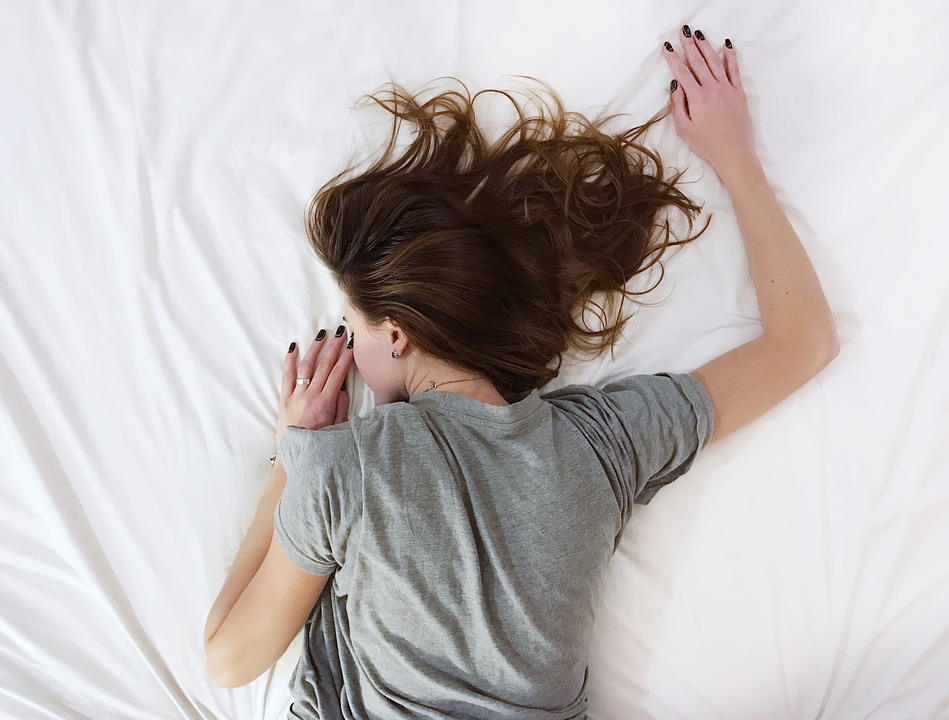What is a migraine?
Migraine is a very common neurovascular disorder. It is characterized by episodes of headache that is often throbbing, frequently unilateral and sometimes it may be severe. These migraine attacks are also sometimes associated with nausea, vomiting, or sensitivity to light, sound, or movement. Also, migraine attacks are episodic and may vary among people. If these attacks are left untreated, they may typically last 4-72 hours.
Do you know the types of migraine?
Well yes, there are several types of migraines. Let’s discuss about its types.
- Classic migraines (migraine with aura): These are the migraines which start with a warning sign called an aura. It is a recurring headache that strikes after or at the same time as sensory disturbances called aura. These disturbances can include flashes of light, blind spots, and other vision changes or tingling in your hand or face. Auras last about 15 to 30 minutes.
- Common migraines (migraine without aura): These migraines do not with an aura. The common migraines may start slowly than classic migraines. It may also last longer, and interfere more with daily activities. The pain of common migraines may be on only one side of your head. This type is very common among people.
- Migraines without head pain: This type also known as “silent migraines”. In this, you may feel other migraine symptoms, but not the usual migraine pain around your eyes and temples. But they may produce other symptoms, including upset stomach, dizziness, and sensitivity to light or sound.
- Hemiplegic migraines: This type of migraine cause one side of your body to become weak. These symptoms are only temporary. This weakness may affect the areas of your body such as your face, arm, or leg. And it may last from an hour to even days. In this type, the head pain can come before or after the weakness. This type of migraine is also rare.
- Retinal migraines: This type cause changes in your vision that are not related to aura vision changes. For retinal migraines, symptoms involve diminished vision or even blindness in one eye. These symptoms do not last long. They can occur before or after head pain.
What are the symptoms of migraine?
Migraine occurs differently in different people. They may happen in stages which may include:
Prodrome: It is an early sign or symptom that often indicates the onset of a disease before more specific signs and symptoms may develop. Hours or days before a headache, most of people who have migraines may notice symptoms such as:
- sensitivity to light, sound, or smell
- Fatigue
- Food cravings or lack of appetite and severe thirst
- Mood changes
- Bloating, constipation or diarrhea
Aura: Aura is a sensation which you experience at the onset of a neurological condition such as migraine. These symptoms stem from your nervous system and often involve your vision. They usually start gradually, over a 5- to 20-minute period, and last less than an hour.
- may see black dots, wavy lines, flashes of light, or hallucinations
- blurred vision
- not be able to see at all
- tingling or numbness on one side of your body
- a heavy feeling in your arms and legs
- ringing in your ears
- changes in smell, taste, or touch
Attack: A migraine headache usually begins with dull ache which then grows into a throbbing pain. This pain can also move from one side of your head to the other parts. The duration of migraines will vary person to person. For some people, it may last for only few hours and for other, may last for days.
Postdrome: It is a symptom or set of symptoms that occurs after a particular condition has passed. This stage can last up to a day after a headache. The symptoms may include:
- tired, wiped out, or cranky
- unusually refreshed or happy
- muscle pain or weakness
- food cravings or lack of appetite
What are the triggers of the migraine?
Let’s understand about few common triggering factors. These include:
Hormone changes: Most of the women notice that they have headaches around their period, or when they are pregnant, or when they’re ovulating. Symptoms may also be due to menopause, birth control that uses hormones, or hormone replacement therapy.
Stress: It is one of the common factor for the stress. When you are in stress, your brain releases chemicals that can cause change in blood vessel of your body that might lead to a migraine.
Food: There are specific foods and drinks, such as aged cheese, alcohol, and food additives like nitrates and monosodium glutamate may be responsible in some people.
Skipping meals: Skipping meals cab be a big migraine trigger. Because skipping meals can cause blood sugar level dips and this may lead to migraine attacks.
Caffeine: If you are having too much caffeine then it can lead to a migraine attack for some people. However, cutting out caffeine at once can also trigger a migraine attack. Thus, it is best to try and gradually cut down the amount you have, rather than stopping suddenly.
Changes in weather: Weather like storms, changes in barometric pressure, strong winds, or changes in altitude may also trigger a migraine.
Senses: Loud noises, bright lights, and strong smells can set off a migraine.
Medications: Medications such as vasodilators which may widen your blood vessels and in turn can trigger migraines.
Tobacco: Nicotine is a chemical which is generally present in tobacco products like cigarettes. When you smoke, nicotine causes the blood vessels in your body to narrow. This reduces blood flow to your brain. This reduction in blood flow may trigger a migraine.
Changes to your sleep: Some people may get headaches when they sleep too much or not enough.
What is the relationship between diet and migraine?
Migraine is a primary headache disorder. Dietary triggers are a common cause of migraine and certain diets have been reported to decrease the frequency of migraine attacks if dietary triggers or patterns are adjusted. There certain diets that are helpful in migraines are as follows:
Elimination Diets:
There are a number of foods that may have an impact on headaches. For some people, it is clear that a particular food causes a problem whenever you eat it. But for others, different foods may contribute to these headaches. Elimination diets require the identification of provocative dietary ingredients and their subsequent elimination. Decreasing intake of these compounds can reduce headache frequency for some people.
- To identify the triggering dietary ingredients, an individual notices a high frequency of headache or migraine upon exposure to a dietary trigger and, consequently, avoids it.
- Most experts recommend that it should be followed for at least 3 months. Depending on how frequent headaches are, patients may be able to tell much sooner than that if it is working or not.
- Dietary triggers do not necessarily point to a food allergy. Food intolerances are more common than food allergies. Therefore, it is important to distinguish between a food allergy and a food trigger for migraine.
- A complete food diary noting the presence or absence of migraine for assessment by physicians can be useful. Exposure to a given food may not always trigger a headache, and the amount of food or the time of exposure might largely influence the outcome.
- Patients with headaches should be encouraged to eat regular meals, whether they are eliminating a food or not. This is because low blood glucose trigger headaches for some people.
- A person on an elimination diet should plan carefully if they are traveling or going to be eating foods cooked by others.
- A number of other triggers, apart from food such as stress, weather conditions, and dehydration, may initiate the migraine process. According to the literature, a food might be a trigger if headache occurred in ≥50% of instances within one day of exposure.
Migraine diets:
There are specific diets for migraine alongside elimination diets. The types of diets that are proposed to be beneficial for migraine are not evidence-driven, but have been proposed to act through a variety of mechanisms. For example, acting on serotoninergic dysfunction, neuronal excitability, brain mitochondrial function, neuroinflammation, hypothalamic function, and platelet aggregation.
- Keto diet, high-folate, low-fat, modified Atkins, and high omega-3 or low omega-6 diets have demonstrated beneficial effects.
- Ketogenic and modified Atkins diets promotes neuroprotection, improve mitochondrial function, compensate for serotoninergic dysfunction, decrease calcitonin gene- related peptide (CGRP) levels, and suppresses neuroinflammation.
- Ketogenic diets also produces ketosis in the body leading to the elevation of ketone bodies, which is beneficial in migraine prevention. Ketone bodies act on mitochondrial functioning, oxidative stress, cerebral excitability, inflammation, and the gut microbiome.
- A low glycemic diet might also be useful in migraine. This diet helps in migraine by lowering the inflammatory state.
- A balance between the intake of omega-6 and omega-3 fatty acids has also been suggested to reduce inflammatory responses, enhance platelet function, and regulate vascular tone. Therefore, a dietary strategy reducing omega-6 and increasing omega-3 fatty acid intake may prove beneficial for migraine.
- Sodium levels have been shown to be higher in the cerebrospinal fluid of patients with migraine than in people without migraine, particularly during a headache attack. While a low-sodium diet has been shown to be protective for elderly individuals, but in a young female population without hypertension, a high-sodium diet was shown to be beneficial. Therefore, sodium intake should be tailored to specific patient populations.
Gut brain axis and probiotics:
Is there a relation between gut brain axis and migraine?
Migraine is often accompanied by gastrointestinal symptoms, including nausea, vomiting, dyspepsia, and bowel disturbances. A link has also been found that headaches occur at a higher rate in patients with gastrointestinal disorders. Studies have also suggested that migraine is associated with inflammatory bowel disease and celiac disease. The concept of a gut–brain axis, explains a bidirectional relationship between the gastrointestinal system and the central nervous system. The cross-talk between the gut and brain may impact several neurological and behavioral disorders. That is why, the modulation of the gut microbiota is helpful in treating or preventing those disorders.
Probiotics and migraine:
- Studies suggest that probiotics might be useful for some neurological disorders, such as Parkinson’s disease. Evidence, however, is limited for migraine. Alteration in the gut microbiota by probiotics has demonstrated beneficial effects, and certain probiotics mainly the strains of lactobacilli and bifidobacteria could prove useful to increase the integrity of the gut epithelial barrier.
- Migraine may improve by dietary approaches with beneficial effects on the gut microbiota and gut brain axis. It also includes appropriate consumption of fiber, low glycemic-index diet, supplementation with vitamin D and omega-3 fatty acids, low-fat vegan diet, gluten-free diet, probiotics, and weight-loss diets.
(Source: https://www.mdpi.com/2072-6643/12/6/1658)
Is there any relation between reduced calories and headaches?
Headaches can occur for a person due to different reasons. These reasons are:
- If you are not getting enough calories, you may feel fatigue and a calorie deficit headache which can be counter-productive to losing weight.
- Skipping meals is not a healthy or migraine-friendly tactic. This may lower your blood sugar levels which is a common migraine trigger.
- If migraine attacks increase after you start a new exercise program, chances are that you are experiencing exercise-induced migraine. It is difficult to point out a single reason for these pains. It could be due to changes in blood pressure during exercise. Certain heavy intensity exercise like weightlifting, rowing, running are the common triggers.
How to control migraines at home without medicines?
If you are facing migraines, then you can follow the following methods to control them naturally at your home. Let’s understand these methods one by one.
Dietary modifications:
There are certain foods which contain specific chemicals and can cause migraines. Many people who get migraines may notice that certain foods can trigger them. These foods may include: processed foods, red wine, alcohol, chocolate, caffeinated beverages. Therefore, modifying diet or eating patterns to avoid the triggers of migraine may help you to prevent migraines in the future.

Stay hydrated:
Dehydration may lead you to develop a headache. Several studies have demonstrated that chronic dehydration is a common cause of migraines. And drinking water helps to relieve headache symptoms in most dehydrated individuals. To help avoid dehydration headaches, focus on drinking enough water throughout the day and eating water-rich foods.

Stress management:
Stress is a one of the common trigger for migraine. It can also create a cycle where migraine pain worsens the stress, which then triggers another migraine. You can try managing your stress by exercise, or meditation. You can also choose to take a warm bath or listen to music to relieve your stress.

Get adequate sleep:
Sleep is very important for your health. The deprivation of sleep can be detrimental to your health in various ways and can also cause migraines.
What is the relation between sleep and migraines?
A study compared headache frequency and severity in those who got less than six hours of sleep per night and those who slept longer. It was found that those who got less sleep had more frequent and severe headache. However, getting too much sleep has also been shown to trigger headaches as well. Thus, getting right amount of sleep is very important to prevent these headaches. The sleep of 8-9 hours per night is essential.

Essential oils:
You can use these essential oil as natural remedies for your migraines. Lavender and peppermint is an essential oil which is beneficial in stress, anxiety, and headaches. A study published in European Neurology found that lavender oil inhalation helped reduce the severity of migraine headaches in some people.

Try yoga:
Exercise of heavy intensity may trigger migraines for some people. But yoga with its slower movements is a safe alternative to heavy workouts. Including regular yoga sessions in your lifestyle may help you to cut the number of attacks of migraines and make them less intense when they do happen.

If you are struggling shedding weight. You can talk to us by taking this assessment: Click here
For more information click here

